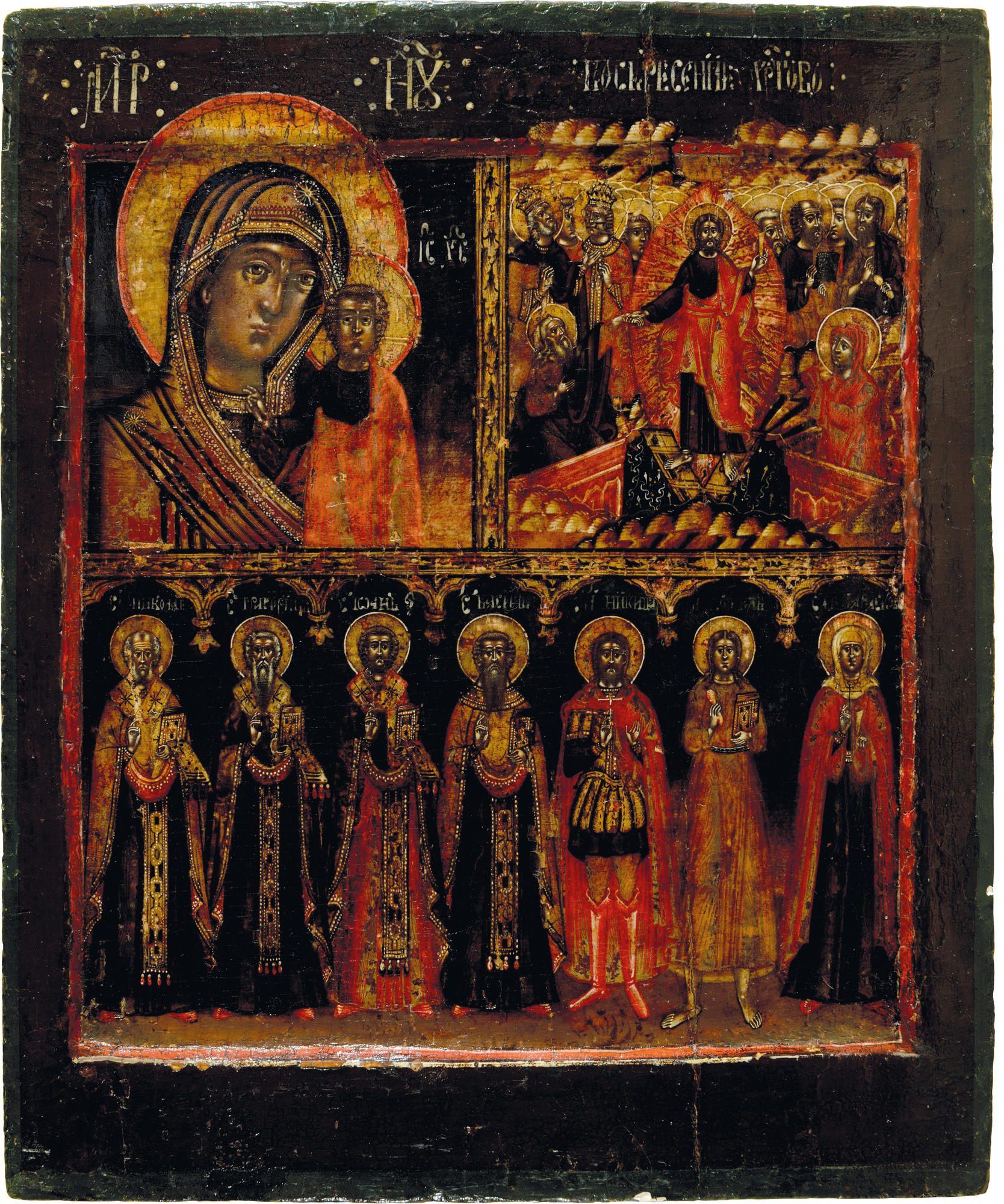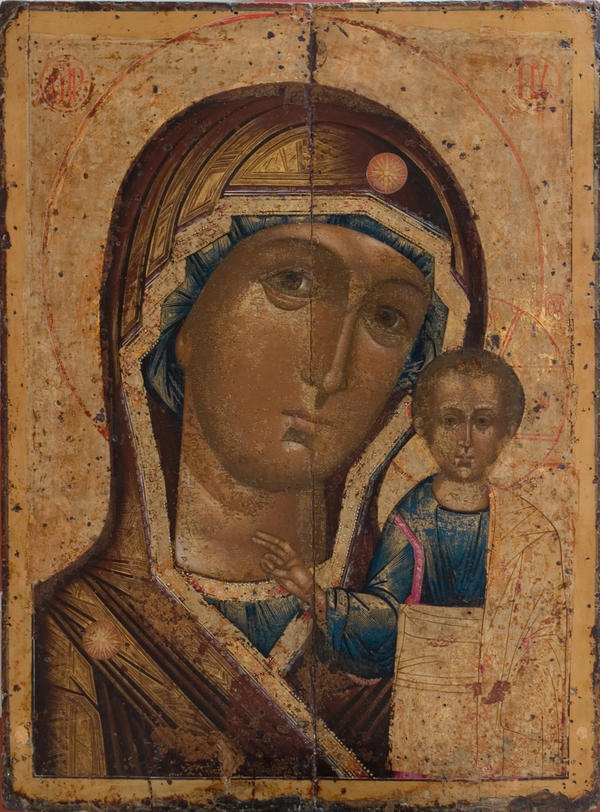This icon is painted in the first half – the middle of the 18th century. It consists of three separate parts: the Theotokos with Infant Jesus is depicted in the upper left, the Resurrection of Christ on the right, and the seven figures of saints below. Such multi-row images were made especially often in the Middle Ages.
Tripartite Icon
Creation period
First half – mid-18th century. Volga Region or Central Russia.
Dimensions
31x26 cm
31х26х3.1 cm
31х26х3.1 cm
Technique
Wood (single panel with kovcheg), two inserted opposed battens (lost). No discernible pavoloka, levkas, tempera, gilding.
Collection
Exhibition
1
Open in app#3
Tripartite Icon
#2
#5
Казанская икона Богородицы. Источник: wikipedia.org
The Theotokos is depicted here in the image of Our Lady of Kazan – in the likeness of the 1579 Kazan Icon. In the Russian art of the 16th century, it did not have exact analogies, however, this image is close to the Hodegetria – a type of icons in which Her figure was shoulder-length.
#6
The long veil of the Virgin is highlighted with golden powder – ‘tvoryonoye zoloto’. Infant Christ is depicted in clothes that are traditional for icons: sort of an ancient shirt, a chiton, over which is worn a himation-cloak. His clothes are also painted with the golden powder paint.
#7
To Virgin’s right is the key scene of the gospel story – the Resurrection of Christ. In the centre stands Jesus, surrounded by a shining oval halo – mandorla. With His feet He tramples on the gates of hell, with His right hand He takes Adam by the wrist out of the coffin, and holds a scroll in His raised left hand. Adam and Eve knelt before Christ. To His left are the Old Testament kings David and Solomon in coronation robes, behind them – the righteous. The depicted to Christ’s right are the prophet Moses with the Tablets of Testimony and the first New Testament prophet John the Forerunner. Between the sarcophagi is a black cave of hell.
In the bottom part of the icon consecutively painted are Saints Nicholas the Wonderworker, Gregory the Theologian, John Chrysostom, Basil the Great, Great Martyrs Nicetas the Goth and Paraskeva Pyatnitsa, the First Martyress Thecla. They were portrayed either according to the calendar principle, or according to the programme composed by icon painters or their customers. The figures of the saints are separated with golden contours, as well as decorative arches with lily flowers. The independent parts of the icon, kleyma, are separated from each other by a golden ribbon with a pattern of oak leaves.
#9
It is not known who exactly painted this icon. But researchers assume that it was a master from the Volga Region or Central Russia. The icon was bought in Moscow and in 1983 transferred to the permanent exhibition of the museum. In 2002, it was restored at the Saint Petersburg Stieglitz Academy of Art. The restorers tinted the lost paint layer on the clothes of Christ and the Theotokos and reconstructed other damages.
#10
Orenburg Regional Museum of Fine Arts
read morehide
00:00
00:00
1x
Tripartite Icon
Creation period
First half – mid-18th century. Volga Region or Central Russia.
Dimensions
31x26 cm
31х26х3.1 cm
31х26х3.1 cm
Technique
Wood (single panel with kovcheg), two inserted opposed battens (lost). No discernible pavoloka, levkas, tempera, gilding.
Collection
Exhibition
1
Open in app
Share



